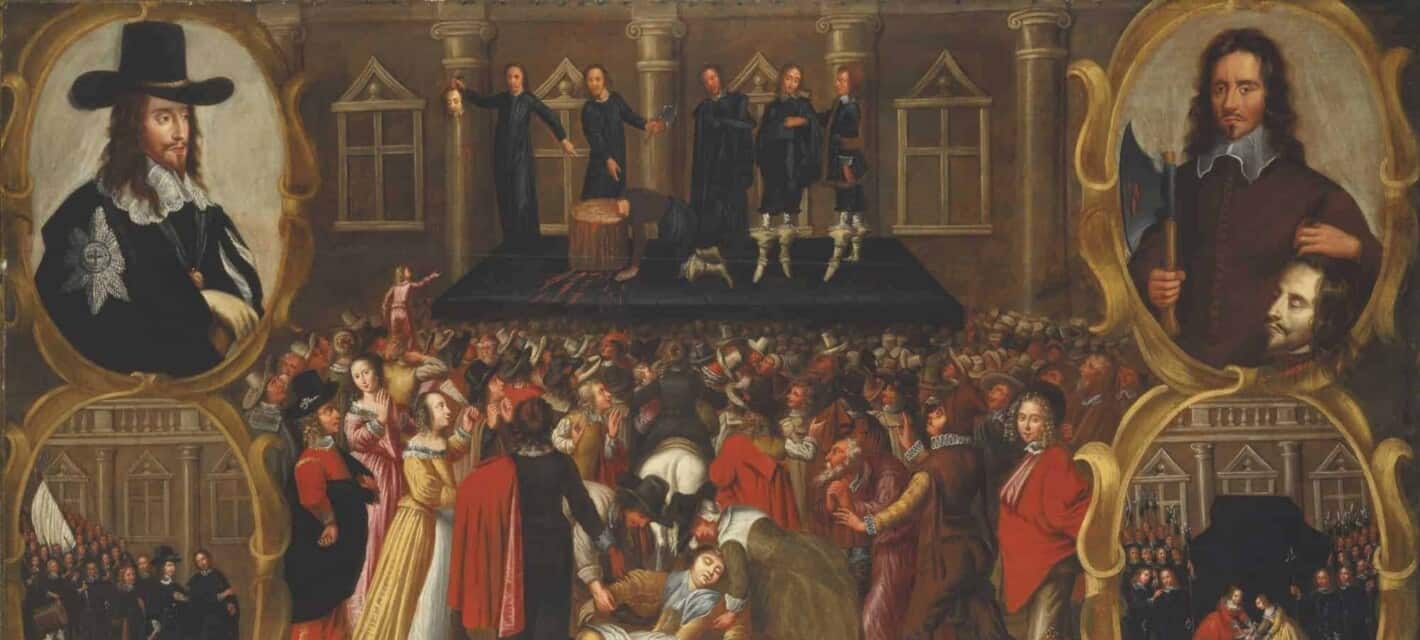The English Civil Wars were a series of conflicts between the Cavaliers (Royalists) and the Roundheads (Parliamentarians). As was the case with the 15th century War of the Roses, there were relatively few significant battles. Affairs in England were settled between 1642 and 1651 although the entire United Kingdom was involved in the Great Rebellion. In this article, I will focus on the three separate civil wars in England which resulted in the execution of a king and the installation of a Protectorate.

Background
King James VI of Scotland became King James I of England in 1603. He was angered by the level of constraints placed upon him by English Parliament as he was used to dealing with the much weaker Scottish Parliament. James dreamed of uniting England, Scotland and Ireland in a single kingdom but never followed through. However, his son and successor, Charles I, was less reluctant and the English Parliament were wary of the new king as he believed monarchs were ‘little Gods on Earth.’
Charles attempted to rule without Parliament and embarked on a period of peace with England’s traditional enemies. His idea of having one uniform church throughout Britain met with violent resistance in Scotland with a rebellion breaking out in 1637. The so-called Bishop’s War began when Charles introduced a new English Book of Common Prayer to Scotland and ended with the Pacification of Berwick truce in 1639.
A lack of money meant Charles had to recall Parliament to ask for financial aid when a second war broke out in Scotland in 1640. This ‘Short Parliament’ was dissolved within weeks as the king took offense to suggestions that he shouldn’t invade Scotland. He attacked the Scots and suffered a disastrous defeat. The desperate monarch recalled Parliament in November 1640. The Long Parliament made a series of demands which angered the king’s supporters while Parliamentarians believed that Charles wanted unrestricted power with the backing of military force.
Tensions rose and in October 1641, Irish Catholics started the Ulster uprising in Ireland in response to fears over growing Protestant power. Rumors spread that Charles supported the Irish and in January 1642, the King tried and failed to arrest five members of the House of Commons for treason. He asked the Speaker of the House, William Lenthall, where the men were. Lenthall responded by suggesting he was a servant of Parliament and not the Crown.
It was a huge mistake by Charles. The Irish Rebellion led to a major political crisis in England as the king and Parliament argued over who should be in control of the army sent to deal with the rebels. In December 1641, Parliament issued a list of grievances it demanded to be dealt with in its Grand Remonstrance. If Charles had listened and reconciled with Parliament, the Irish rising would probably have been crushed easily. Instead, he tried to root out apparent traitors; an act that practically destroyed any chance of peaceful relations with Parliament.
After his failure at the House of Commons, Charles fled to London to keep his family safe. Further talks with Parliament led to nothing, and by the summer of 1642, the towns and cities of England began to throw their support behind one cause or the other. Much of Eastern England was behind the Parliamentarians as the people believed Charles cared little for the welfare of the general public. Most of Wales and Northern England remained loyal to the Crown. Charles attempted to get weapons from Kingston upon Hull but was turned away. On 22 August 1642, Charles raised the Royal Standard at Nottingham. This act is typically seen as the beginning of the First English Civil War.

